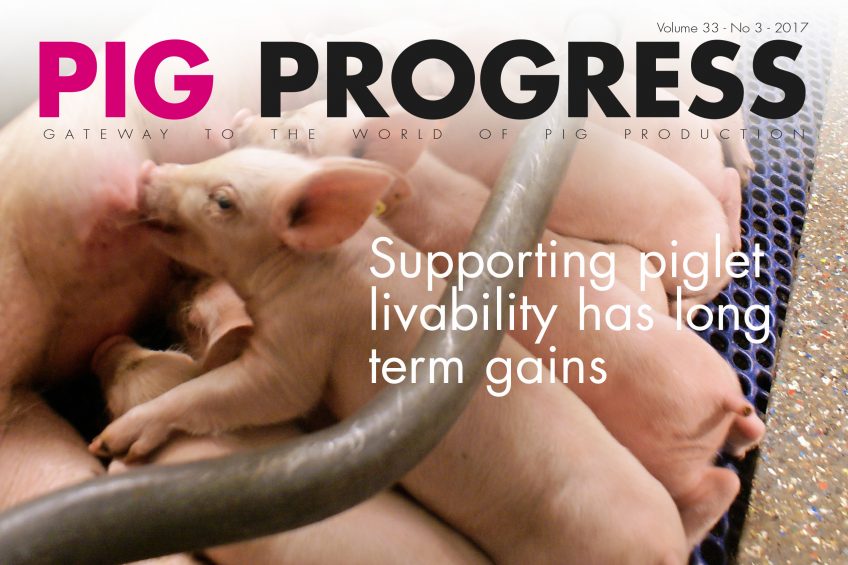Piglet feeding in latest edition of Pig Progress

The new edition of Pig Progress features a range of articles on the feeding of piglets and how their health and well-being can be guaranteed around weaning.
Antibiotics play an important role in controlling the health of especially young piglets – but its unlimited usage is under increasing amounts of pressure, also in Asia. At the recent edition of VIV Asia in Bangkok, Thailand, this was a reason for many companies to organise events on antimicrobial reduction – and how to overcome this, often through feeding.
Pig Progress, in cooperation with the Thai Department of Livestock Development,Innovad and ISN (part of AB Agri) held a side symposium and the result has been conveniently summarised on pages 29 and further. In addition, highlights of several other side events on antibiotic reduction during VIV Asia are also included.
Does lecithin help piglets grow?
Digestibility of piglet feed has often been shown to be improved by adding lecithin to the diet, because of its effect on fat. Denise Beaulieau of the Canadian Prairie Swine Centre, in combination with P. Leterme of Bunge Ltd, also wanted to know whether it can also benefit piglet growth rates. Their results can be read on pages 8-9.
Yeast-derived proteins
One more way to enhance piglet feed can be by adding yeast-derived proteins. Yeast-derived proteins do not have any harmful side effects and the approach is well-researched, writes Dr Jules Taylor-Pickard of Alltech on pages 26-27.

Supporting piglet livability
Cargill Animal Nutrition is placing emphasis on the concept of ‘piglet livability’. Apart from presenting in a series of webinars, Cargill’s Marc Decoux wrote an article about the topic and how survival rates of piglets can be positively influenced by targeted nutrition solutions – not only for piglets but also for sows. Pages 24-25.
Check out the webinar: Increasing sows’ productivity by 2 weaned piglets per sow per year
Loose farrowing systems
Interesting developments in the field of housing and equipment! In a Danish trial facility, 10 different loose farrowing pens are being simultaneously tested in practice. Correspondent Stuart Lumb took a look. Pages 20-22.
Canada and its dependence on trade
This month’s country focus zooms in on Canada, which has great potential for the swine industry, if only because of its endless plains. Trade therefore is important for Canada’s swine sector, as is described by correspondent Melanie Epp. Nevertheless, there are several difficulties and challenges for the country, think for instance of a more isolationist approach by the new US president Donald Trump. Pages 10-12.

Looking ahead to ESPHM 2017
Soon, the next edition of the European Symposium of Porcine Health Management will take place in Prague, Czech Republic. Pig Progress’ correspondent Norman Dunn spoke to Dr Andreas Palzer, president of the European Association of Porcine Health Management, while looking ahead to the next edition. Pages 14-16.
The effect of pelleting on pig diet value
French research zoomed in on the effect of pelleting on the nutritional value of complete feeds for pigs. The results, described by correspondent Philippe Caldier, can be read on page 23.

Columns on your routine and legislation
Columnist John Gadd is this month interested in the daily routine of pig farmers – and how this could be improved, on page 17. Welfare columnist Dr Monique Pairis-Garcia looks at legislation that is intended to protect farmers, but which might backfire, page 34.
To view this issue in digial form and others see Pig Progress Digital














